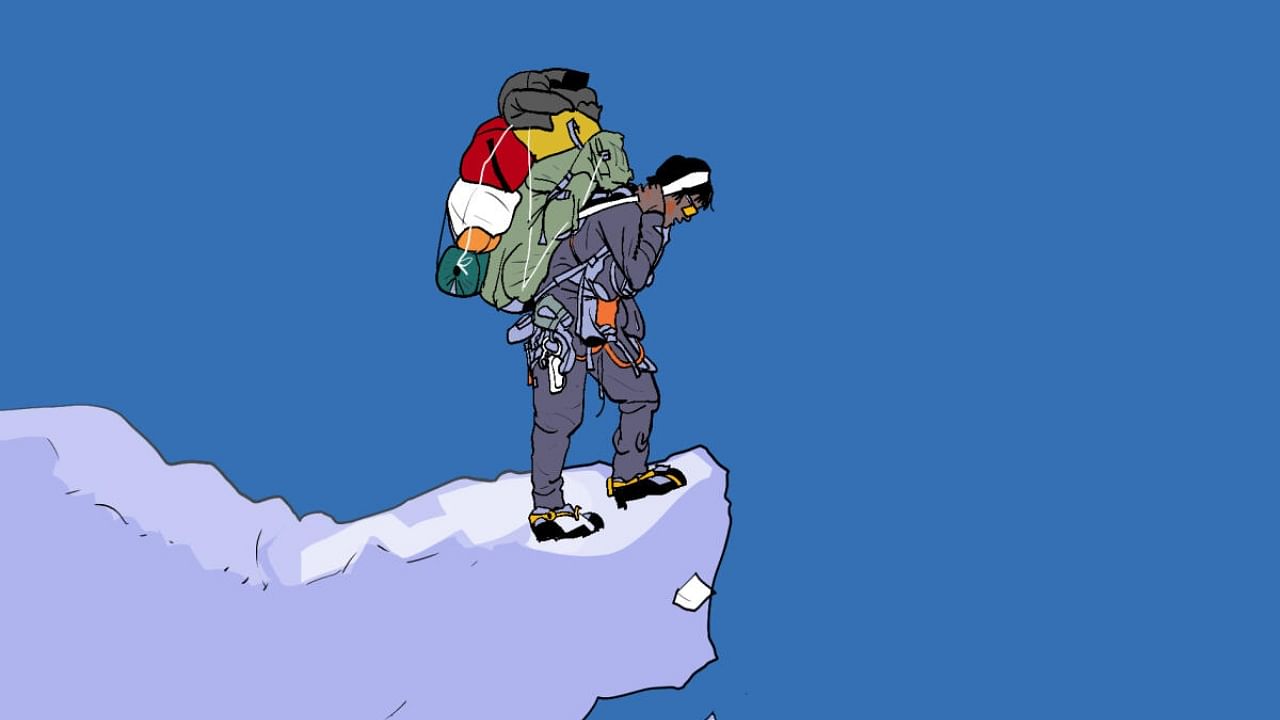
It was a bring-your-child-to-work moment. The father’s intention, however, was not to inspire.
Kami Rita Sherpa, a renowned Nepali mountain guide who holds the record for most ascents of Mount Everest, took his 24-year-old son, Lakpa Tenzing, to the foot of the magnificent peak in late 2021 and told him that this was as close as he should think about coming to it.
“It’s a struggle, look at me,” Kami Rita Sherpa recalled telling his son there. “I see no future.”
It is an increasingly common sentiment in a trade that has often been passed down through the generations, as the risk-to-reward calculation for more Sherpa families argues for abandoning the mountain.
The dangers of guiding climbers to the world’s highest peak, with the ever-present possibility of falls, avalanches and extreme weather, are evident. Nearly one-third of the 315 recorded deaths on Everest over the past century have been of Sherpa guides, according to the Himalayan Database, a mountaineering record-keeping body. Just last month, three Sherpas died when they were hit by a column of ice at a glacier near the mountain’s base camp.
The pay is also modest for all but those who make it to an elite and decorated club of guides, after years of gruelling climbs and proven success. Sherpas early in their career make about $4,000, minus expenditures for arranging gear, for their once-a-season Everest expedition, which accounts for the bulk of their yearly income.
But what is pushing Sherpas to leave the industry, and to discourage their children from taking it up, is the scant security it offers. If a guide becomes disabled or ends up dead, there is little safety net for his family — insurance pay-outs are limited, and a promised government welfare fund for Sherpa guides has not materialised.
Some who abandon the mountain are migrating abroad, a common path to better job prospects in one of Asia’s poorest countries. Others have found whatever work they can inside Nepal.
“I won’t suggest my hard-raised children go to the mountains and continue the same risky mountain guide jobs,” said Kaji Sherpa, who quit in 2016 after eight years as a Sherpa guide and became a security guard for a local hydropower project.
Kaji Sherpa survived one of the deadliest disasters on Everest, when an avalanche in 2014 killed 16 Sherpas. Many mountain guides had hoped that the tragedy would bring a reckoning for the industry, prompting new safety measures and life insurance offerings. After the disaster, the Sherpas threatened to cancel Everest expeditions, which bring in millions of dollars every year to Nepal. The government then announced the welfare fund for climbing guides, but, according to government officials and expedition leaders, it has never been activated.
Changes introduced by expedition operators have also brought little security. While insurance policies have been improved, they give the families of Sherpas only about $11,000 in the event of death and about $3,000 in case of injury. They also provide a guarantee of about $5,000 to cover expenses for a rescue operation in case of an accident.
There is no firm data on trends in Sherpa employment. But there are signs of strain among both the Sherpa guides and expedition support workers.
In an effort to create more job opportunities on the mountains, the Nepali government recently issued a rule requiring that gear be taken by porters and yaks from the Syangboche, the site of the nearest airport to Everest, at 12,467 feet, to the base camp, at 17,500 feet.
But the government was forced to reverse the decision after expedition operators complained that there were not enough porters and yaks. In March, only weeks before the season began, officials ordered that helicopters be allowed to ferry the loads to the base camp.
Among those who have left the mountains behind is Apa Sherpa, a famed guide who held the record for most summits of Everest until Kami Rita Sherpa broke it in 2018.
Apa Sherpa, who is now 63, moved to Utah in 2006 and settled his family there.
“It’s all for education,” Tenzing Sherpa, the eldest son of Apa Sherpa and an accountant at a biotech firm, said by phone. “Both my dad and mom were deprived of education, so he worked hard in the mountains.”
For Kami Rita Sherpa, the decision to discourage his son from following him to Everest came from his own hard journey.
Despite being in an elite echelon of Sherpas—he has scaled Everest 26 times—his earnings barely cover the expenses of his family of four. They live in a rented apartment in Kathmandu.
Every spring, when Kami Rita Sherpa leads his next expedition to Everest, his family holds its breath. “I pray day and night and light candles at Boudhanath stupa for his well-being when he remains away from home,” his wife, Lakpa Jangmu, said, referring to a Buddhist shrine in Kathmandu. “The sigh of relief comes only when I see him entering through that door.”
Kami Rita Sherpa said he would continue working on the mountain for the rest of his career. “If I lead an expedition team, scores of Sherpas get jobs as porters,” he said, adding that it brings the state thousand of dollars.